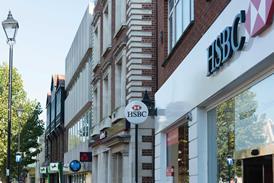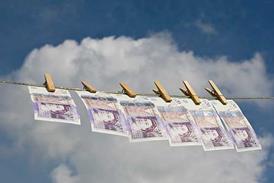Valuation and sale of goodwill
The recent cases of Beaver v Cohen & ors [2006] EWHC 199 (Ch) and Gorne v Scales & ors [2006] EWCA Civ 311 supplement the precious little authority on how goodwill in professional practices should be valued. There are several different scenarios giving rise to the need to value goodwill, each potentially requiring a different approach.
Under section 39 of the Partnership Act 1890, on dissolution every partner is entitled, as against the other partners, to have the property of the partnership applied to the payment of its debts and liabilities, and to have the surplus distributed among the partners. This can normally be achieved in one of only two ways - either by way of a sale to a third party, or by way of the purchase of the interest of one or more partners by the other partner(s).
The general rule is that any partner is entitled to require a sale to a third party. However, in a suitable case the court will make an order whereby a partner or partners with a substantial majority interest are permitted to buy out the insubstantial minority (against the wishes of the minority) (see Syers v Syers [1876] 1 App Cas 174). The firm will be valued as a going concern, unless through no fault of the purchasing partners it is in reality no longer a going concern.
The old adage that a thing is worth what someone will pay for it often has equal application to professional practices.
In a negotiation, whether on a sale to surviving or continuing partner(s), or a sale to a third party, the starting point for valuation is the current value of the tangible assets that they acquire. The next question is how much more are they willing to pay for the name of the firm and the benefit of continuing or renewable retainers, or the client connection generally. In the case of negotiations with surviving or continuing partner(s) alone, they face the uncertain alternative of a sale to a third party, which the court will readily order in such a way as is most beneficial to the partners as a whole (see Taylor v Neate [1888] LR 39 Ch D 538).
Clearly, selling parties are well advised to try to create a market for the firm by finding as many alternative buyers as possible to bid against each other, so that an auction can ensue. Where there is competition between partners to acquire a firm, the court will not hesitate to allow partners to bid against each other and/or against third parties.
Surviving or continuing partners may be tempted to take the view that they can 'set up business across the street', rather than purchase goodwill. If in doing so, with or without solicitation, they in practice appropriate continuing or renewable retainers or use the firm's name or imply that they are continuing its business, they may have to pay a high price (see [2005] Gazette, 8 September, 29, and Avis v Balfour (1999) Ch D - only reported on Lawtel).
Agreement or order
Professional firm partnership agreements often contain an option for continuing partners to buy out the interest of retiring or deceased partners, either by way of an agreed method of valuation, or at 'market value'. A commonly agreed formula in relation to goodwill is a stated percentage of average annual profits over the preceding two or three complete financial years.
An agreement or order to purchase goodwill at a valuation, to be effected as at a particular date, without further guidance as to how to go about the valuation, can be more problematic. Expert valuers sometimes prefer, or will at least take cognisance of, a valuation arrived at by taking a multiple of average annual profits that exceed a perceived appropriate minimum level of profits per proprietor, sometimes after deduction of assumed yield from the value from tangible assets, so-called super-profits. Inevitably, such a method may more often than not produce results that are different from (above or below) the price that a real purchaser would be prepared to pay.
In re An Arbitration between David and Matthews [1899] 1 Ch 378, Mr Justice Romer held that partnership goodwill should be 'valued on the footing of the consideration of what its value would have been to the partnership if there had been no contract between the parties that the surviving partner should purchase the share of the deceased partner and therefore on the footing that if it was sold the surviving partner would be at liberty to carry on a rival business but could not use the name of the partnership firm and would not have the right to solicit the old customers of the firm'.
While not in any way representing an advance (or certainly not any radical advance) in the law relating to court-ordered valuations, the case of Beaver v Cohen does demonstrate the willingness of the Chancery masters and judges to become involved in the nuts and bolts of goodwill valuation and to produce creative solutions to fit the case. It provides some practical guidance as to one method that might be adopted by parties by consent, and illustrates how difficulties can arise in defining the nature of goodwill, and establishing the test for determining whether it has transferred from one party to another.
In that case, a goodwill valuation dispute had arisen between chartered accountants who had practised together in a small firm. The account being taken was not in fact strictly an account taken on dissolution of the firm, since dissolution had occurred years before and that accounting had already been dealt with. Rather, following dissolution, the two former partners (C) continued to act as consultants to (and thus act for clients of) the continuing sole proprietor, Mr Beaver (B), who in the earlier dissolution had acquired all of the goodwill. When their ways eventually parted, C took certain clients away with them. B sued for the value of the goodwill attaching to those clients. C submitted to an order for an account, to include the value of goodwill, but the order for an account did not specify the basis on which the goodwill was to be valued.
An application made to resolve this issue came on for hearing before a deputy master. No expert evidence was adduced as to the appropriate method of valuation. With the consent of the parties, the master devised a method of valuation of goodwill, taking into account the current circumstances and past history:
B sought to appeal this order to a High Court judge. His permission to appeal was limited in effect to one issue - what is the test for deciding which clients had transferred their business to C to such a degree that C ought to pay pursuant to the formula? The judge held that any client who had incurred a fee with C after C had moved to their new firm was such a client, irrespective as to the extent of that fee or whether each such client might subsequently (in other words, subsequent to incurring a fee with C) have died or become bankrupt. The judge also of his own motion (without being prompted by submissions on the point) imposed a cut-off date of one year after C had moved to their new firm, so that any client who first instructed C after that date was to be disregarded.
Gorne v Scales
The Court of Appeal gave judgment in Gorne v Scales on 29 March 2006. The case concerned the method of valuation of a card index of customers of a partnership and the sales history of each customer, which was removed by the defendant partners for use in their new business on the collapse and dissolution of the subject partnership. Similar principles are likely to apply to computerised customer information in a professional practice.
The master assessing damages found that 40% to 45% of the defendants' customers in their first year of trading were derived from the card index. The claimant had elected to claim damages rather than seek an account of profits. The claimant's expert accountant regarded the card index as representing the goodwill of the partnership, to be valued by reference to the trading accounts of the partnership as well as to the trading accounts of the defendant partners' new business, deducting the net asset value of the business from what he thought a purchaser would pay for the business as a whole. The defendants' expert valued the card index as an income-generating asset for which a purchaser would be willing to pay a multiple of the annual maintainable positive cashflow, which he assessed to some extent by reference to the accounts of the defendant partners' new business. The master preferred the claimant's expert's method and awarded damages accordingly.
The Court of Appeal (Lady Justice Arden dissenting) found that it was inappropriate to assess damages on the basis of assuming the continuation of the business as a going concern, involving a review with hindsight of the business derived by the defendant partners from the card index, since in reality the business of the subject partnership had collapsed. If the card index had not been appropriated by the defendant partners, the only way that the card index could have achieved value for the partners as a whole would have been on a sale to a competitor or to the defendant partners. Thus damages should be assessed by reference to the price achievable on such a sale as at the date of dissolution, without reference to the subsequent performance of the defendant partners' new business.
By Peter Garry, Cripps Harries Hall, Tunbridge Wells



























No comments yet